When Aircraft Looked Like Toys
Many of us will head to Split for HiveFest in about a month. By plane, with very few exceptions. Flying is affordable, fast, and even rather convenient, even with low-cost airlines, considering the other options for long-distance traveling. Being a frequent flier myself, I don’t think much about it – I board the aircraft in one place and leave it a few hours later, a few thousand kilometers away. It’s safe, actually the safest means of transportation. But those are the planes of today. Some hundred years ago, aircraft looked more like toys. Let me take you to the Kbely Aviation Museum in Prague, across the oldest exhibits. I genuinely admire the people who flew on them – it was rather bold.
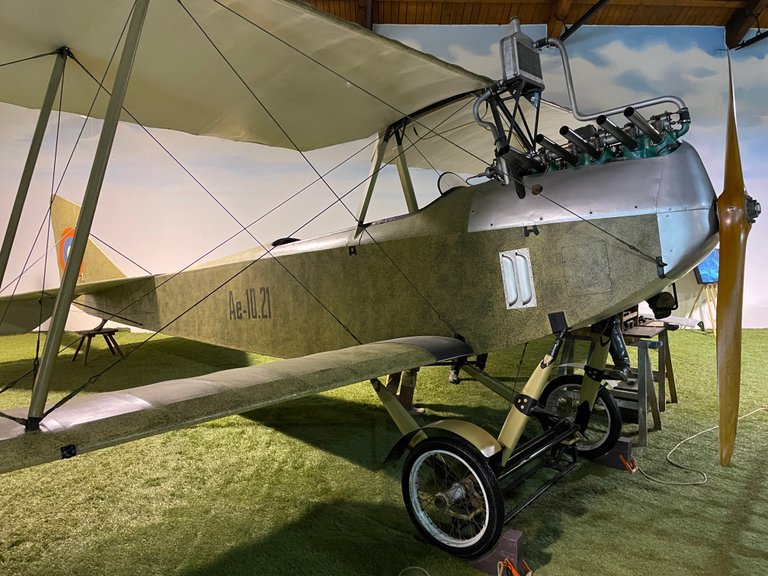
I mentioned the place a while ago when I sampled beers in the local brewery, spotting the modern counterparts of the exhibits taking off from the small civil airport nearby. Feel free to revisit that post. And for now, let’s enter the hangar exhibiting the 1918-1924 Czechoslovak Air Force, the first generation of military aircraft of a newborn country. Being neither a history buff nor an aviation expert, I had to make notes while roaming the hangar.
Aero Ae.10
A 1919 training airplane, this particular one was one of the very first aircraft purchased by the Czechoslovak Air Force. It was, in fact, a modification of an older Austro-Hungarian aircraft, the Hansa-Brandenburg B.I, which was licensed for production in Bohemia during WWI. It seems that Austria not only lost the war and a handful of countries but also its industrial designs ;)
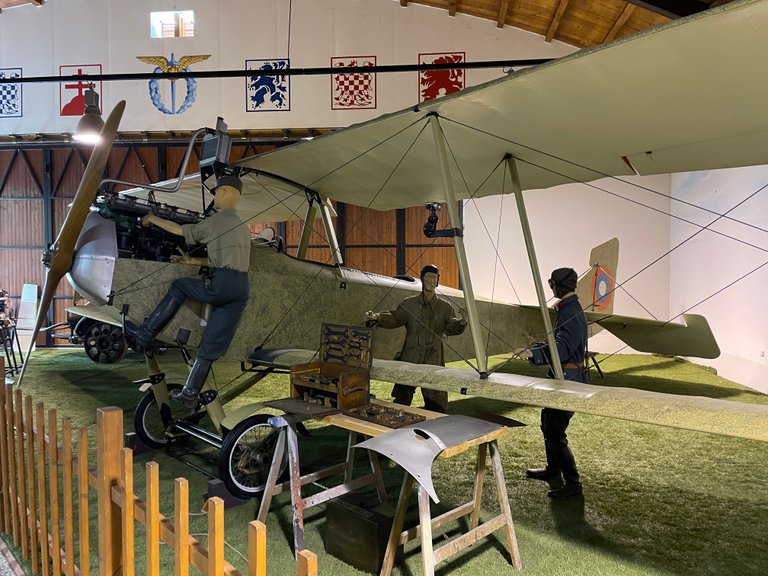
SPAD S.VII C.1
A French WWI fighter from 1916, the SPAD S.VII C.1 helped the Brits and French dominate the Western Front. As several Czechoslovak pilots flew under the French flag back then, the newborn country could purchase a handful of these aircraft, eventually becoming the third-largest user after their country of origin and the USA.

Bohemia B.5
This is a rarity, the only Bohemia B.5 left. And as you can see, it’s only a fuselage, not a complete plane. At least you can appreciate the toy-like design I keep mentioning. The Bohemia B.5 was, in fact, a two-seated sports aircraft not intended for military purposes but was allegedly used to train military pilots.
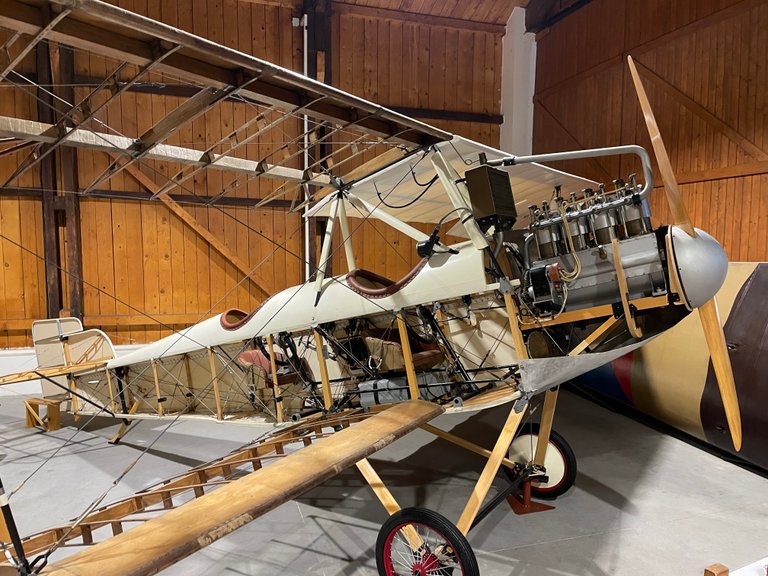
Letov Š.2
If you wonder how to pronounce the weird letter, it’s almost the same as the American pronunciation of “ash.” Its direct predecessor, the Š.1, was the first Czechoslovak military aircraft, serving as a surveillance plane since 1920. The Š.2 was just a re-engined model – unless you’re a pundit, you won’t see any difference there. Its display also shows a century-old fuel pump.

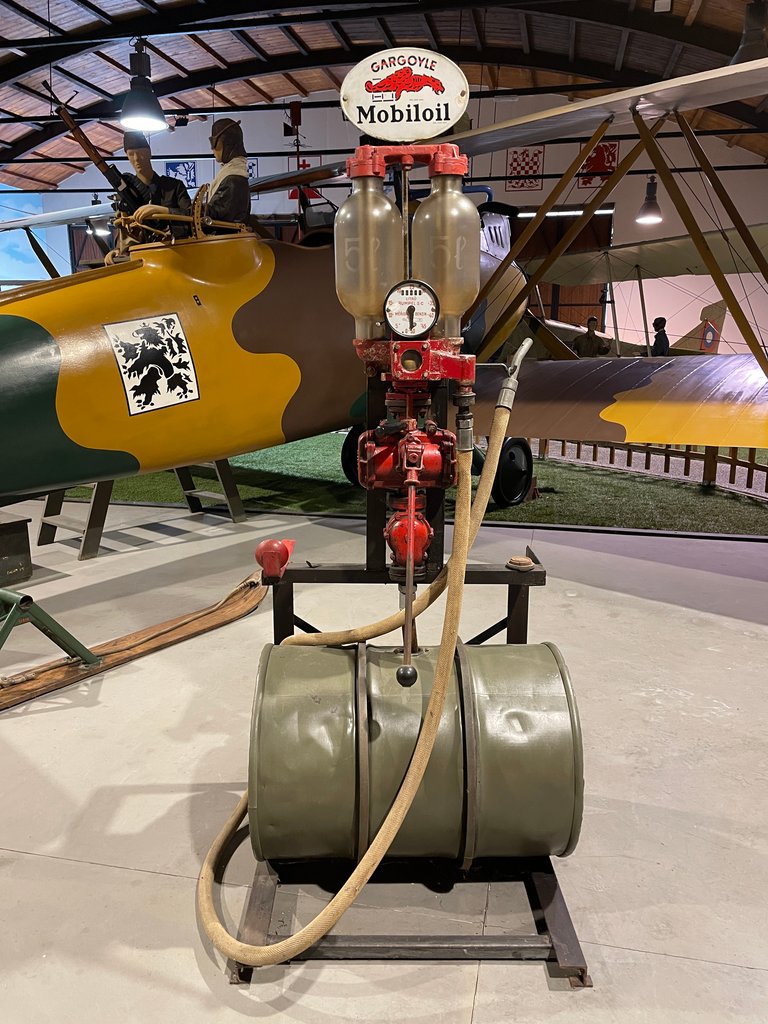
And here’s how the toys—oh, I mean planes—were made: in a carpenter’s workshop. Would you fly them?
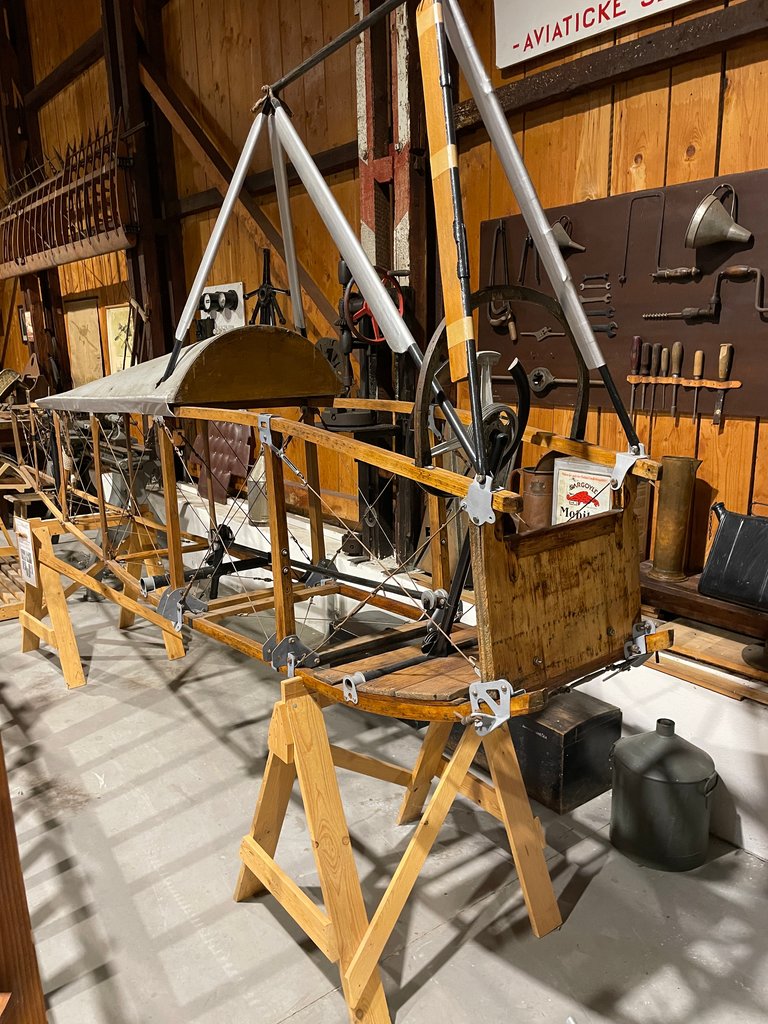
Let’s move to a younger generation of aircraft – the adjacent hangar displays planes from 1925 to 1938. Since the boom of aviation and the mass production of planes came with WWII, they still look more like something a DIY enthusiast might secretly build in a grandparent’s barn. On the other hand, they became more robust, capable of longer flights, and were equipped with medium to heavy machine guns.
Aero A.12
This mid-1920s light bomber still resembles the older Hansa-Brandenburg aircraft Aero produced during WWI. Nevertheless, it is genuinely the work of the Czechoslovak company. It established several international records, successfully competed in races, and became the backbone of the Czechoslovak Air Force in the 1930s.
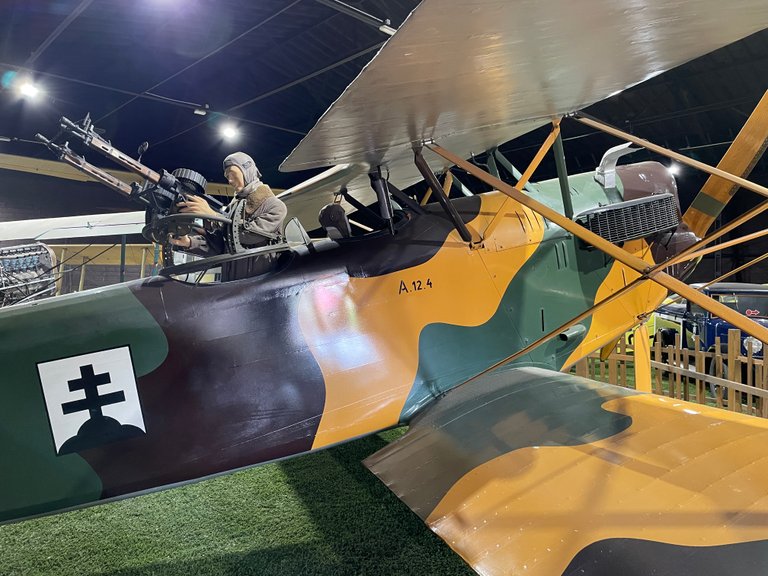
Aero Ab.11
In addition to the Czechoslovakian army, the Finns also used this light bomber. The Scandinavians replaced the wheels with sleds to enable the aircraft to land on snow – low-quality old photos were on display, and the plane looked rather amusing. Like other 1920s models, the Ab.11 soon became obsolete after WWII began.
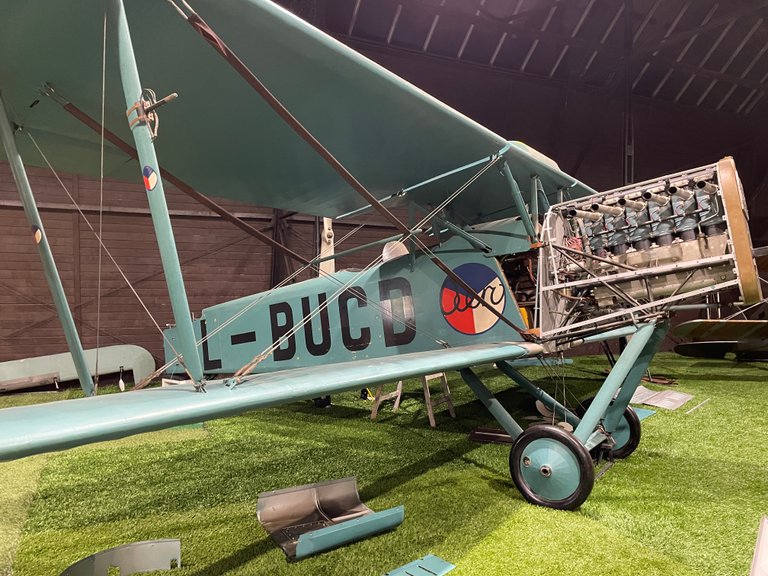
Letov Š.20
This was the first aircraft with Czech engines by Škoda that I spotted. It also became the first Czechoslovak military aircraft exported when Lithuania purchased 10 in 1925. Surprisingly, the Lithuanians placed their order faster than the Czechoslovak army.

Aero A.10
I’m naturally more interested in civil planes than military ones, and this one caught my attention at first sight. It’s the first Czechoslovak airliner, designed to carry up to 4 passengers. I can’t imagine traveling in it, even though it was fancy inside, with cushions and sofas.
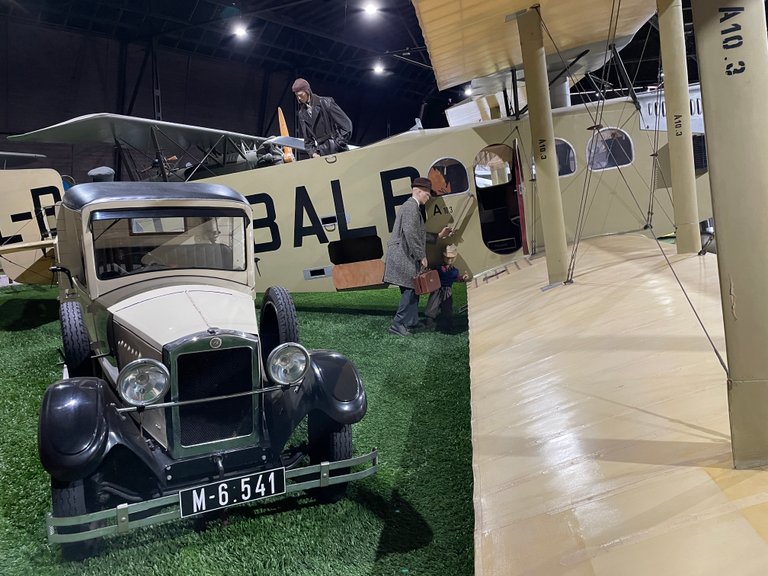
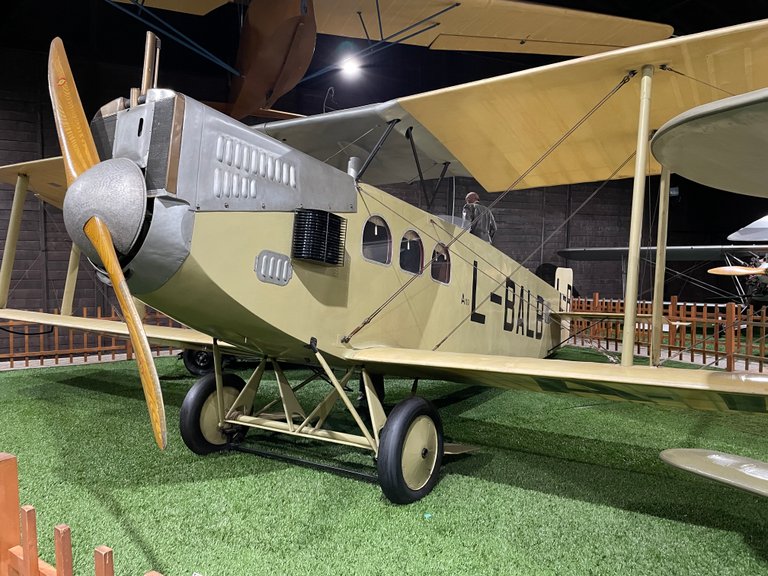
Aero Ap.32
Back to military aircraft – this is a heavy fighter/support airplane from the late 1920s. In addition to the Czechoslovak army, the Gendarmerie used several of these planes to patrol the border and spot smugglers.
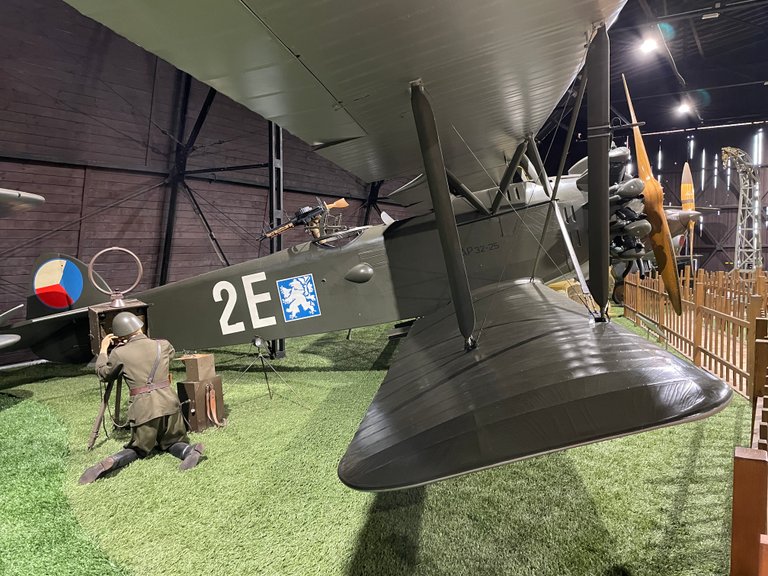
Avia B-534
Another step forward in time – this 1930s fighter was a response to the pre-WWII German military buildup and its claims over the Czech border. As a top-notch pre-war aircraft, it became obsolete soon after the war began. The Czechoslovak Air Force did not participate in the conflict; most pilots fled to the Allies and joined their side, while the aircraft were confiscated by the Third Reich.
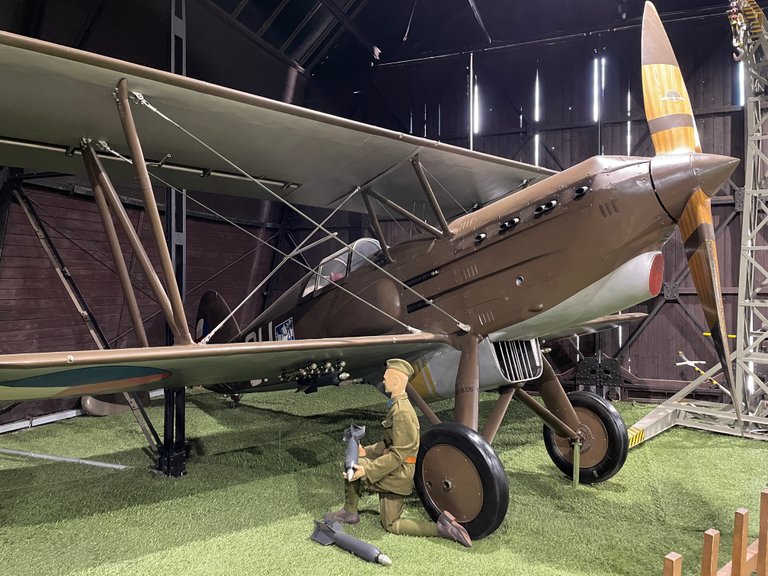
Mignet HM-14 Pou du Ciel
That colorful fly below the ceiling is a French sports airplane. Aviation enthusiast Henry Mignet established himself as a small craft producer in the 1930s. Since his aircraft looked the way they did, they were dubbed Pou du Ciel—Sky Fleas. This Flea was purchased by a Czechoslovak entrepreneur and has survived until today.
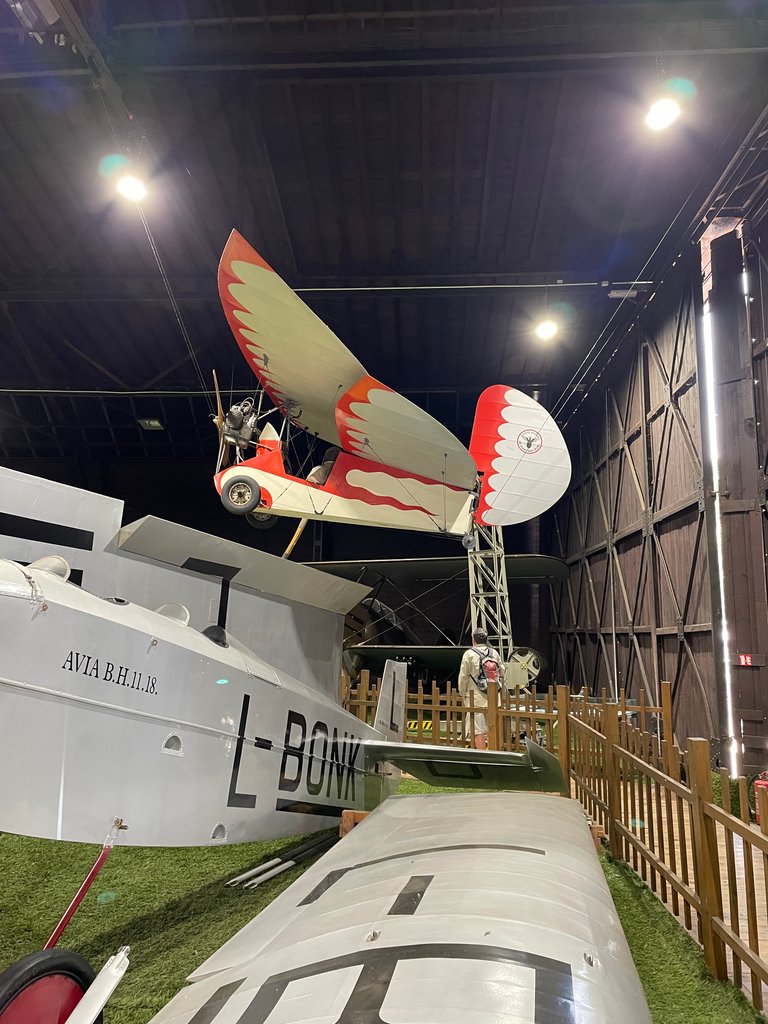
Avia BH-11C
The other sports plane sharing the picture with the Flea is the Avia BH-11C. Designed in the early 1920s, it is the oldest monoplane I noted. The very plane you see competed in various air races and emerged victorious in the 1926 Coppa d’Italia, one of the most prestigious competitions of the time.
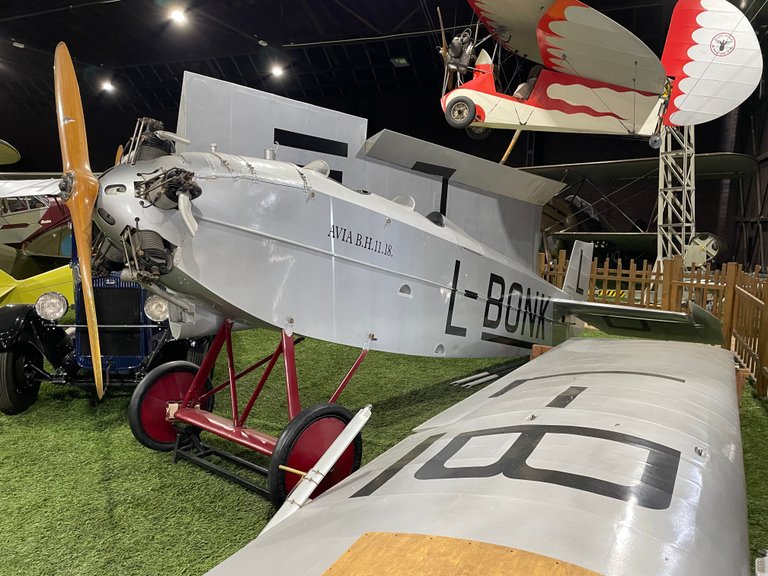
So much for the pre-WWII aircraft. Stay tuned! I’ll take you through WWII, the Cold War, and contemporary planes in my future posts.
Posted Using InLeo Alpha
Congratulations, your post has been added to the TravelFeed Map! 🎉🥳🌴
Did you know you have your own profile map?
And every post has their own map too!
Want to have your post on the map too?
- Go to TravelFeed Map
- Click the create pin button
- Drag the marker to where your post should be. Zoom in if needed or use the search bar (top right).
- Copy and paste the generated code in your post (any Hive frontend)
- Or login with Hive Keychain or Hivesigner and click "create post" to post to Hive directly from TravelFeed
- Congrats, your post is now on the map!
PS: You can import your previous Pinmapple posts to the TravelFeed map.Opt Out
Congratulations, your post has been added to WorldMapPin! 🎉
Did you know you have your own profile map?
And every post has their own map too!
Want to have your post on the map too?
When I was younger I liked to assemble small models of ancient planes like that! They look so dangerous to fly on lol.
Yep, more like toys and models than actual aircraft :)
They legit look like they could fall apart 😭😭
Flying must have taken only the bravest of hearts😂😂
Congratulations @godfish! Your post brought a smile to the TravelFeed team so we have sent you a smiley. Keep up the good job. 🙂
Thanks for using TravelFeed!
@for91days (TravelFeed team)
PS: Did you know that we have our own Hive frontend at TravelFeed.com? For your next travel post, log in to TravelFeed with Hive Keychain or Hivesigner and take advantage of our exclusive features for travel bloggers.
Bonito y antiguo avion